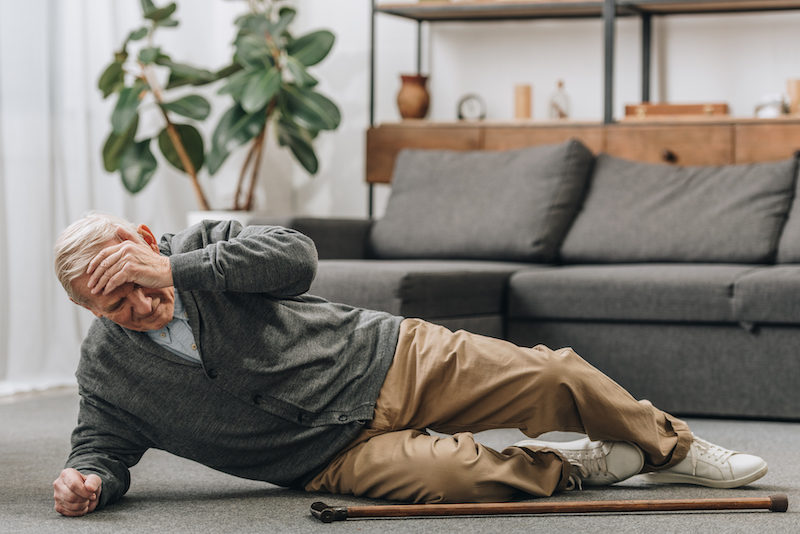If you are in need of a fall prevention program in Visalia, we encourage you to read on. We think this information may be of value to you and your loved ones.
Falls…A Silent Killer
Falls pose one of the greatest possible threats to the health of older adults. They are the leading cause of non-fatal injuries and death in this population, and as the number of older adults grows, so too will the incidence of falls and fall-related injuries.
Approximately one-third of older Americans—which those who are 65 and over—experience a fall each year, which results in more than 2.8 million injuries treated in emergency rooms.
Most fractures in this population are due to falls, with over 95% of hip fractures resulting from a fall of some sort. Other bones commonly fractured after a fall include the spine, forearm, leg and ankle, and the risk for these increases even more when osteoporosis—also common in older adults—is present.
Common Reasons Why People Fall
Falls can occur for a number of reasons, but they are often due to a combination of internal and external factors. After the age of 65, a variety of health conditions contribute to falls. Some of them include:
- Arthritis,
- Dementia,
- Diabetes,
- Balance impairments,
- Lower body weakness, and
- Impaired vision or hearing
If you or a loved one has any of these or a combination of these risk factors, your risk of falling increases.
Don’t Forget Medications
Many older adults also take multiple medications, some of which can affect balance or otherwise interfere with one’s ability to stay on their feet.
Environmental Factors
Environmental factors also play a major role in fall risk. Failing to take proper precautions can leave a home filled with potential hazards that can be slipped or tripped on to cause a fall. These include:
- Loose rugs,
- Clutter,
- Slippery surfaces,
- Poor lighting,
- Steep or uneven stairs, and
- A lack of handrails or grab bars.
All of these are commonplace in homes if an older adults but these can be modified.
Do a home walkthrough to identify anything that could contribute to a fall
If a fall does occur, many people go on to develop a greater fear of falling, even if they’re not injured. This can cause them to limit their activities, which leads to reduced mobility and loss of physical fitness. Worst of all, this process can turn into a vicious cycle that further increases the risk for falling due to these changes. This shows why it’s so important to take the necessary precautions and reduce or eliminate potential hazards in your home. We recommend these tips to mitigate your fall risk:
- Wear shoes with nonskid soles and consider using Velcro or spyrolaces
- Walk through your home, take note of any obstacles that may lead to a fall, and make the necessary modifications to eliminate them
- Install handrails on both sides of all stairways, avoid clutter and putting any items on the floor, remove throw rugs, and make sure your home is well-lit
- In bathrooms, use non-skid mats, a raised toilet seat and grab bars as needed
- Get your eyes checked once a year, and get adequate calcium and vitamin D
- Take your time, be patient and ask others for help with difficult tasks
- Stay physically active and avoid spending too much time sitting
The importance of regular physical activity for improving balance and reducing fall risk is continuously supported by medical literature, such as this recent study published in May 2019, which concludes with the following statement:
Regular physical activity including aerobic, anaerobic and proprioceptive components may be practiced in order to promote static balance in the elderly as a mean to reduce future risk of falling
Our Physical Therapists Can Help Reduce Fall Risks
Physical therapists can help you increase your physical activity levels in ways that are safe and feasible for you, which will lead to better overall health and a lower likelihood of falling. And read our next blog for additional tips to help you reduce your fall risk.

